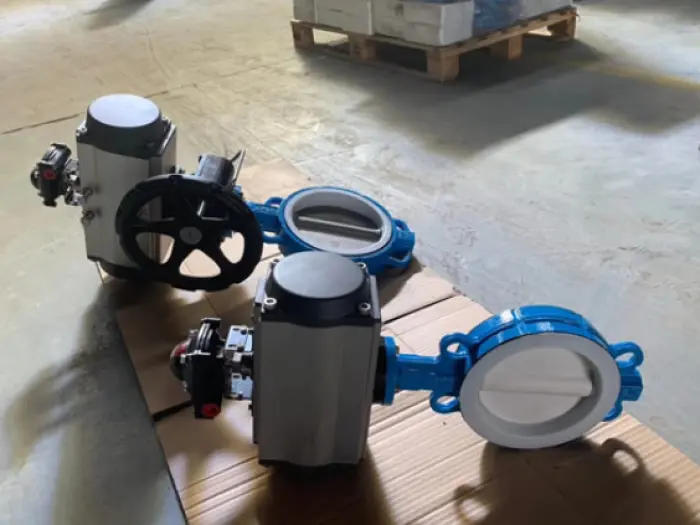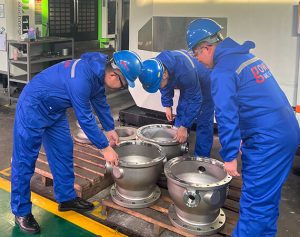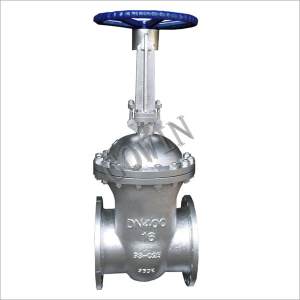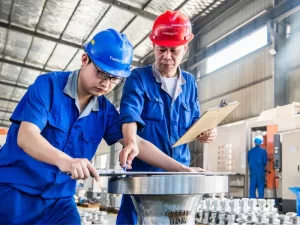Butterfly valves are preferred selections in industrial operations that utilize quarter turn rotation. These valves are further broken down into many different designs with each of them offering their own varied benefits; for example smaller sizes, 90 degree revolving and greater control proficiency. This article further elaborates the makeup and application of pneumatic butterfly valves.
What is a Butterfly Valve with a Pneumatic Actuator Made Of?
The usual makeup of pneumatic butterfly valve is as follows:
- Valve Structure: The overall body of the valve which keeps hold of the internal parts. It links the valve to the handle which manages the opening/closing mechanism.
- Disc: The butterfly shaped disc which is responsible for controlling fluid flow.
- Seat: A sealing layer which connects with the disc and blocks leaks.
- Rod: A shaft that operates the movement of the valve by connecting the actuator to the disc.
- Actuator: The system responsible for the valve’s functioning.
Breaking Down Pneumatic Butterfly Valves
Butterfly valves are distinguishable with regards to the butterfly disc design which connects to a spindle. When opened/closed, the movement of the spindle and disc mimics the motion of a butterfly’s wings. In a closed position, the butterfly disc is revolved at a 90 degree angle compared to the liquid’s flow. So, if the substances flow from right to left, it’ll stand upright. Rotating the disc the only other way possible will then allow fluid to pass through.
That’s the working of a simple manual butterfly valve. The butterfly valve with pneumatic actuator working is slightly different. When a pneumatic actuator is installed, the process becomes automatic. The pneumatic actuator makes use of externally provided compressed air to revolve the disc around its 90 degree axis.
Pneumatic actuators are differentiated into two acting kinds: single and double. The single acting actuator impersonates the working of a spring. The compressed air is used to convert power generated from a spring to push/pull a piston, determining if the valve remains open/closed. This is best for clamping situations. The double acting actuator generates pressure on both sides of the piston to move it in both directions. This suits gate opening/closing uses.
The Kinds Of Butterfly Valves Manufacturers In China
There are plenty of differentiable butterfly valves with each used for their own specific operations. Let’s see the most common:
- High Performance Valve: Used to deal with larger machines involving high grade objects.
- Lug Style Valve: Come with threaded inserts also better known as lugs which allow for simple setup with flanges. These usually require frequent upkeep.
- Flanged Valve: These come in several shapes and pressure groups. They’re installed via a direct link with flanged ended tubes.
- Resilient Seated Valve: More suited to be used in HVAC and purification systems. It’s known for its airtight seals.
- Double Offset Valve: More often found in high pressure and temperature situations. It showcases an offset stem and sealing layer for stronger fastening.
- Triple Offset Valve: Features three different offsets to maximize airtight sealing. It is used to deal with extremely high pressure situations, like dealing with steam.
- Concentric Valve: More commonly found and used for general applications. It comes showcasing a central disc and stem.
- Wafer Style Valve: Often found squished in the middle of two flanges or any small spaces. It is generally smaller and a lot lighter than other valves.
The Applications Of Pneumatic Butterfly Valves In Industries
- Power Industries: Mostly used for controlling fluid flow in pipes because of their small and easy to handle shape.
- Fossil Fuel Industries: Butterfly valves handle cooling operations and air purifying processes.
- Food Industries: Butterfly valves are easy to clean and durable for food industry conditions.
- HVAC Automation Industries: The fast response system and compact makeup allow for better airflow control.
- Water Treatment Industries: The excellent precision control and low maintenance makes butterfly valves ideal.
- Chemical Industries: Butterfly valves are typically corrosion-resistant. This makes them apt for managing chemical solutions.
Final Thoughts
Butterfly valves come in several different forms, following the quarter turn or 90 degree rotation axis which determines its opening/closing. These valves are generally less pricier and can be used wherever necessary. To understand how these valves may be useful to you, it’s important to understand the different types. Looking for butterfly valves manufacturers in China? You can contact places like GOWIN Industrial Valve for any of your questions!
- What is a Butterfly Valve? Components, Uses, Types, Advantages (gmsthailand.com)
- Types of Butterfly Valves | Garlock
- Butterfly Valve Design Differences | Tameson.com
- Pneumatic butterfly valve working principle diagram - tanghaivalve
- Double Acting vs. Spring Return Actuator: What's the Difference? (cpvmfg.com)








